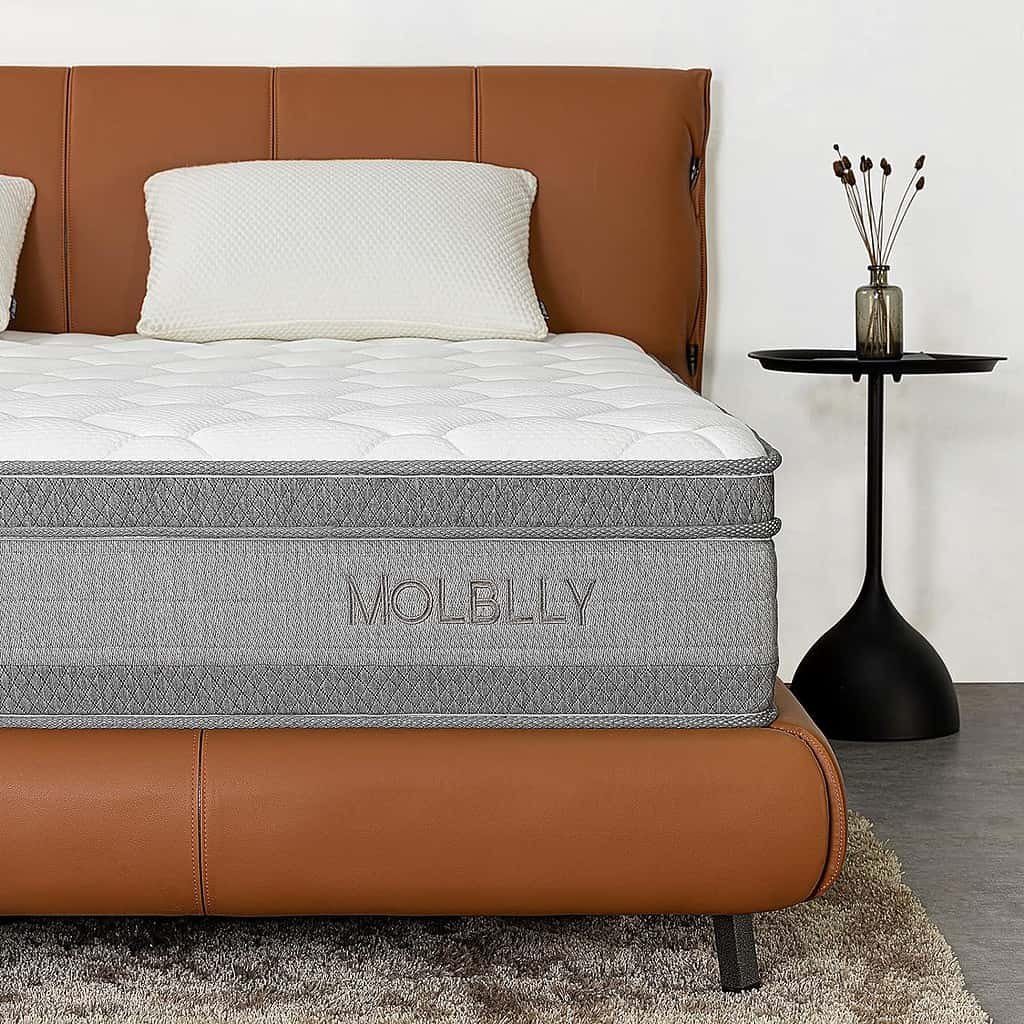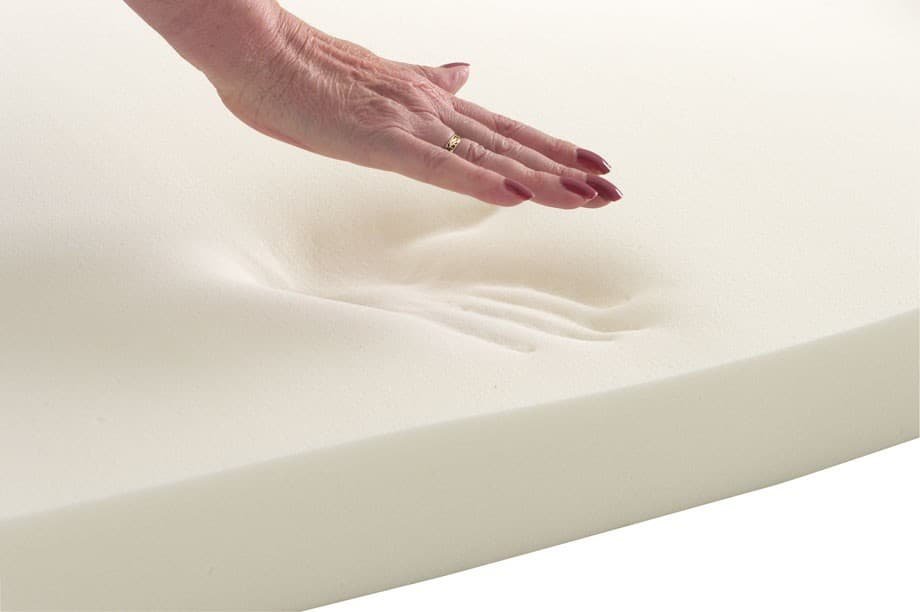Mattress Buying Mistakes to Avoid: A Friendly Guide for Consumers
When purchasing a new mattress, making the right choice can significantly impact the quality of one’s sleep and overall well-being. Unfortunately, many people make preventable mistakes during this process, leading to discomfort and unnecessary expenses. This article will explore some common mattress-buying mistakes and share insights on how to avoid them.
A common mistake is focusing solely on price and losing sight of the value of a good night’s sleep. While sticking to a budget is essential, investing in a mattress that provides the required support and comfort is equally important. Another common pitfall is neglecting to test out various mattresses. Trying different options, materials, and firmness levels to make an informed decision is crucial to finding the ideal match. By acknowledging and sidestepping these typical blunders, individuals can improve their chances of selecting the perfect mattress while avoiding disappointing purchases. By dedicating time and effort to making the right decision, thoughtful buyers can ensure a restful slumber and improved overall health.
Identifying Your Needs
Before buying, consider factors like your sleeping position, body type, level of firmness, and any existing medical conditions.
Sleeping Style – For instance, side sleepers typically require a softer mattress to relieve their hips and shoulders pressure. On the other hand, back and stomach sleepers usually need a firmer mattress to maintain proper spinal alignment. If you share the bed with a partner, consider their preferences and sleeping positions.
Body Type – It’s also essential to consider your body type and weight. Individuals who weigh more may need a thicker, firmer mattress to provide sufficient support and prevent the bed from sagging. Likewise, lighter people may feel more comfortable on a softer mattress.
Ailments – Another aspect to consider when identifying your needs is whether you have allergies or medical conditions, such as asthma or chronic back pain. In this case, looking for mattresses made with hypoallergenic materials or those that offer targeted back support might be beneficial.
Budget – Don’t forget to factor in your budget. While investing in a quality mattress for a good night’s sleep is essential, be realistic about how much you can spend. There are plenty of affordable options available on the market that cater to various preferences and needs.
Setting a Realistic Budget
When buying a mattress, setting a realistic budget is important to ensure you get the best value for your money. A helpful first step is to identify your needs and priorities.
- Do you prefer a softer or firmer mattress?
- Are you after specific materials like memory foam, latex, or innerspring?
Having a clear set of criteria will make it easier to narrow down your options. It’s crucial to consider a price range before shopping for a mattress. Research the market to understand the general price range of mattresses that meet your needs. Remember that the price often reflects the materials, construction, and overall quality when deciding on your budget. Cheaper mattresses might seem like a great deal initially, but they may not offer the support and comfort you need in the long run. A more expensive mattress, on the other hand, may provide better support and last longer, making it a more worthwhile investment.
Here are 4 tips to help you set a realistic budget:
- Research the market: Learn about the different mattress types, materials, and price ranges.
- Prioritise your needs: Determine what factors are most important to you, such as comfort, support, and materials.
- Balance quality and cost: Be willing to spend more for a higher-quality mattress but avoid overspending on unnecessary features.
- Look for deals: Watch for sales and promotions to help you get the best mattress within your budget.
Selecting the Best Mattress Material
Below are descriptions of some popular mattress materials which can help guide your decision.
1. Pocket Sprung – Pocket sprung mattresses contain individual springs sewn into separate fabric pockets. This design allows excellent support as the springs respond independently to your body weight, distributing pressure evenly.
Pocket sprung mattresses provide:
- Good airflow and breathability
- Bounce and responsiveness
- A durable and long-lasting option
However, they can be:
- Heavier and harder to manoeuvre
- More expensive than other types
2. Memory Foam – Memory foam mattresses are known for their ability to mould to the body, providing tailored support and pressure relief. The benefits of memory foam include:
- Excellent pressure relief
- Motion isolation, reducing partner disturbances
- Versatile, as they are available in different firmness levels
Memory foam drawbacks are:
- Retaining body heat, potentially causing discomfort for hot sleepers
- Initial off-gassing odour
3. Latex – Latex mattresses are made of natural or synthetic rubber, offering a supportive and bouncy sleeping surface.
The advantages of latex include:
- Hypoallergenic and antimicrobial properties
- Responsive and bouncy feel
- Durable and long-lasting
Latex mattresses may not be ideal for those who:
- Prefer a softer sleeping surface
- Are on a tight budget, as they can be expensive
4. Hybrid – Hybrid mattresses combine the benefits of two or more materials, such as memory foam or latex layers, on top of pocket springs. This creates a mattress with the following:
- Good pressure relief and support from the top layers
- Effective motion isolation
- A balanced feel from the combination of materials
However, hybrid mattresses:
- It can be on the heavier side
- Might be more expensive than other options
- When selecting a suitable mattress material, it’s essential to consider factors such as your sleeping style, budget, and personal preferences.
Finding a Suitable Firmness Level
An essential factor to consider is the firmness level. Choosing the right firmness can significantly impact your comfort and sleep quality. In this section, we will explore the different firmness levels and how to determine which one is right for you.
Soft – Soft mattresses provide a plush, cushioned feel and can be ideal for individuals who prefer to sink into their beds. They typically work well for side sleepers, as they can contour to the body, providing adequate support to the shoulders and hips. However, a mattress that is too soft may not provide enough support for some sleepers, potentially leading to misalignment of the spine and discomfort. Consider your preferred sleeping position and body weight to determine if a soft mattress suits you. Lighter individuals may find that a soft mattress provides support, while heavier individuals may require firmer options.
Medium – Medium-firm mattresses fall in the middle of the firmness spectrum, balancing cushioning and support. This level of firmness is often the most popular choice, as it caters to a wide range of sleeping positions and preferences. Medium-firm mattresses work well for back and combination sleepers, providing enough support for spinal alignment without causing pressure points. To establish if a medium-firm mattress is right for you, assess your sleeping position and any pre-existing conditions, such as back pain. Medium-firm mattresses can help reduce discomfort for those experiencing back pain, but individual preferences and needs may vary.
Firm – Firm mattresses provide a more rigid feel, offering good support for the entire body. They are particularly suitable for stomach sleepers and heavier individuals, as they help to maintain proper spinal alignment and prevent sinking too far into the mattress. However, a bed that is too firm may cause discomfort for some sleepers by creating pressure points on the shoulders and hips. In evaluating if a firm mattress is the best choice, consider factors like your sleeping position, body weight, and any specific concerns, such as joint pain or spinal issues. Consult with a healthcare professional if you are unsure about the best firmness level for your needs.
Considering Size and Dimensions
One common mistake when purchasing a mattress is neglecting the importance of size and dimensions. To find the perfect mattress for you, it’s essential to consider your room size, personal preference, and the number of people using the mattress.
- Firstly, measure the space in your room where the bed will be placed. This gives you an idea of the maximum mattress size that can fit comfortably. Leave enough space for walking around the bed and other bedroom furniture. Always double-check the mattress measurements before purchasing, as sizes can vary between manufacturers.
- Consider your sleeping habits and preferences. If you move a lot while sleeping or enjoy extra space, a larger mattress might be a suitable choice. Couples prefer a double or king-sized mattress for optimal personal space and comfort. Moreover, height plays a significant role in selecting the right mattress size, as taller individuals often require extra legroom.
- Lastly, remember that the best mattress size can help improve sleep quality and maintain a healthy sleep posture. Smaller mattresses may lead to cramped sleeping positions, while too large a mattress could overwhelm your room and make it challenging to move around.
Assessing Durability and Lifespan
When shopping for a mattress, consider its durability and lifespan, as it directly impacts sleep quality and long-term comfort. A well-built mattress with high-quality materials can last up to ten years or more.
To assess the durability of a mattress, it’s important to pay attention to factors such as the materials used, the construction, and the warranty offered by the manufacturer. Quality materials typically include high-density foams, natural latex, and pocketed coil springs. These components are known for their resilience and ability to withstand wear and tear. The construction of a mattress also plays a significant role in determining its durability. For instance, mattresses with individually pocketed coils provide better overall support and contouring, while those made of all-natural latex are resistant to sagging and indentations.
Additionally, don’t underestimate the importance of a mattress manufacturer’s warranty. A reputable mattress brand will provide at least a 10-year warranty, indicating confidence in their product’s longevity. Always read the warranty fine print, noting any specific terms or conditions affecting coverage. Another helpful tip is to check for reviews and testimonials from real users. These customer experiences can shed light on whether a mattress holds up over time and maintains its comfort and support. Remember that individual preferences and specific requirements must be considered, making it crucial to test a mattress before purchase.
Reading and Understanding Customer Reviews
Consider customer reviews as they provide valuable insights and experiences of others who have already tried the product. Reading and understanding these reviews can help you avoid common mattress-buying mistakes.
- To gain a well-rounded understanding, read multiple reviews from different sources, such as online retailers, forums, and blogs. This will give you a comprehensive picture of the mattress’s performance, durability, and comfort. Look for patterns and recurring comments in the reviews to identify common praises or complaints.
- Pay close attention to the reviewer’s sleeping preferences and needs, as these can affect their overall satisfaction with the mattress. For example, a side sleeper may favour a softer mattress, while a back sleeper could prefer a firmer one. If you come across a review by someone with similar preferences and needs, their experience could be particularly relevant to your decision-making process.
- Lastly, be aware of biased or fake reviews aiming to promote a product without giving genuine feedback. To avoid falling for these misleading reviews, look for clear and detailed descriptions of the mattress and any potential drawbacks the reviewer might have experienced. Trustworthy reviews often provide a balanced perspective.
Checking Warranty and Return Policy
Be well-informed about the warranty and return policy offered by the retailer/mattress brand. A good warranty and return policy can provide peace of mind and ensure that any issues are quickly resolved.
- One common mistake is not thoroughly checking the warranty details before buying. Most mattress brands offer a warranty, but the terms can vary significantly. For example, some warranties cover only certain defects, such as sagging or defects in materials. It’s essential to read the warranty conditions carefully and understand what is and isn’t covered. A study highlighted the importance of warranty returns in maintaining customer satisfaction.
- Another vital aspect to consider is the duration of the warranty. A longer warranty is generally more favourable, providing extended protection for your investment. Warranties can range from a few years to a lifetime, so choose a mattress with a warranty period that suits your needs.
- Return policies are equally important when buying a new mattress. Some retailers offer a sleep trial, which allows you to test the mattress at home for a specific period, usually between 30 and 100 nights. If you’re unsatisfied with the mattress during the trial period, you can return it for a full refund or exchange. However, not all sleep trials are the same. Some may require you to keep the mattress for a minimum number of nights before initiating a return, while others might charge return shipping or restocking fees. It’s crucial to understand the return policy terms before making a purchase.
To avoid unpleasant surprises, stick to retailers with transparent and customer-friendly warranty and return policies. Confirming the details with the seller before finalising your mattress purchase is always a good idea. This way, you can enjoy your new bed, knowing you’re covered should any issues arise.
Divulging on Limited-Time Offers and Discounts
Regarding mattress shopping, it’s essential to be cautious of limited-time offers and discounts. While these promotions may seem enticing, they can sometimes lead buyers to make hasty decisions without thoroughly researching the product.
- It’s common for retailers to promote limited-time offers on mattresses, especially during seasonal sales or clearance events. However, it’s crucial to remember that a lower price doesn’t always guarantee a better deal. The mattress might be made of subpar materials or not provide the appropriate support, which could lead to various sleep issues in the long run.
- Discounted products may also have hidden conditions, such as non-refundable sales, limited warranties, or lack of proper customer service. The buyer might have to take a significant loss if there are any issues or dissatisfaction with the mattress. To avoid this, always read and understand the terms and conditions of the sale before making a purchase.
- One way to ensure a well-informed decision is to take advantage of the trial period offered by many online mattress companies. This allows buyers to test the mattress in their homes and make a more confident choice.
Frequently Asked Questions
What should I consider before buying a mattress?
Before purchasing a mattress, it’s essential to consider factors like your sleeping position, comfort preferences, and budget. You should also research different materials and types of mattresses, such as memory foam, latex, or innerspring, to determine which suits your needs the best.
How can I avoid overspending on a mattress?
To avoid overspending on a mattress, set a budget beforehand and stick to it. Look for sales and discounts, or even consider purchasing a floor model to save money. Also, don’t be swayed by expensive marketing gimmicks – focus on the mattress’s quality and comfort instead.
How can I be sure that the mattress suits my sleep position?
Understanding your sleep position is vital in choosing the best mattress. Firmer mattresses generally suit stomach and back sleepers, while side sleepers may prefer a softer mattress. It’s essential to test different mattresses to find the best support and comfort for your sleep position.
Is it crucial to test a mattress before buying?
Yes, testing a mattress before purchasing it is highly recommended. Lie on the mattress in your typical sleep position and spend 10-15 minutes on it to determine if it’s comfortable and supportive enough. If you’re purchasing online, opt for brands offering sleep trials to test the mattress at home and return it if it’s not suitable.
What are the common misconceptions about mattress firmness?
A common misconception about mattress firmness is that a firmer mattress always provides better support. However, it depends on personal preference and your sleep position. Some people may find a too-firm mattress uncomfortable and lacking proper pressure relief. It’s critical to remember that comfort and support are subjective.
How important is the warranty when choosing a mattress?
Although a warranty is not the determining factor, it’s essential to consider when choosing a mattress. A good warranty can provide peace of mind and protect you against manufacturing defects or premature wear and tear. Look for a warranty that lasts at least 10 years and covers issues like sagging, broken coils, or foam deterioration.



